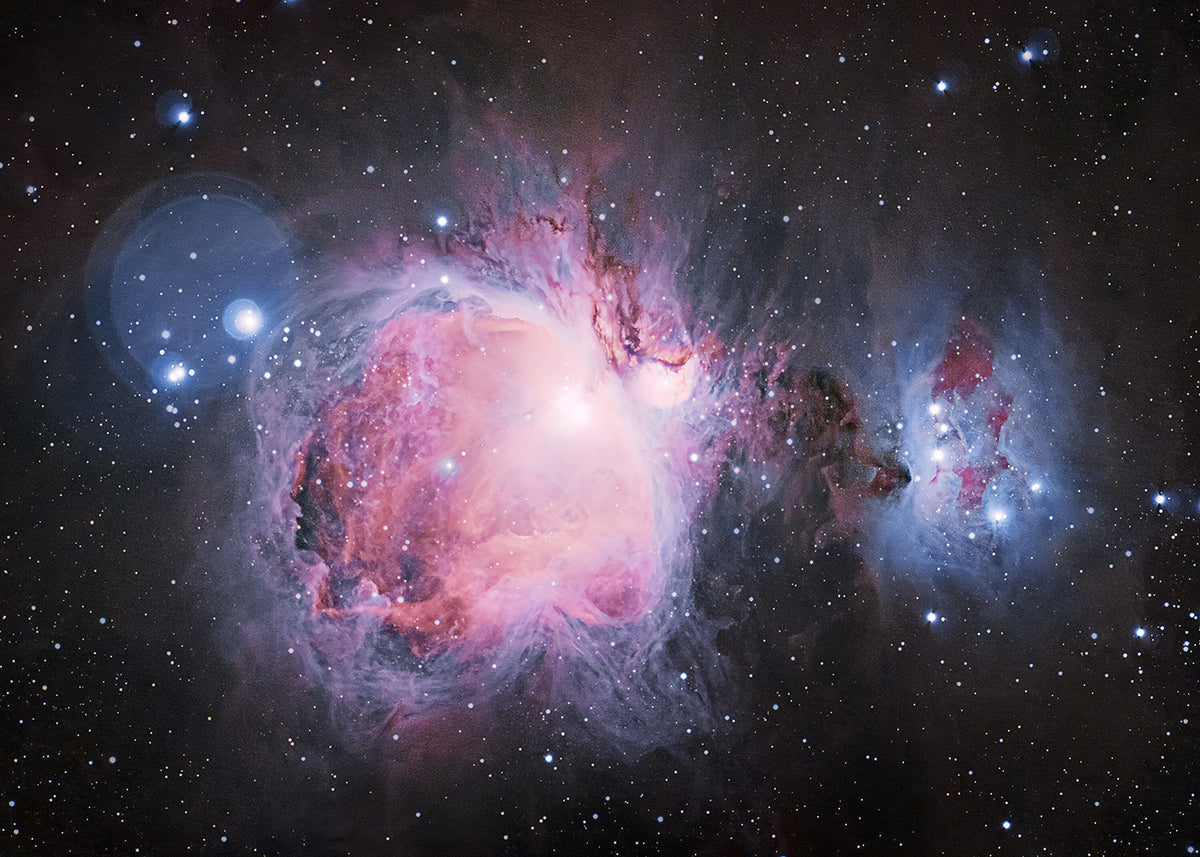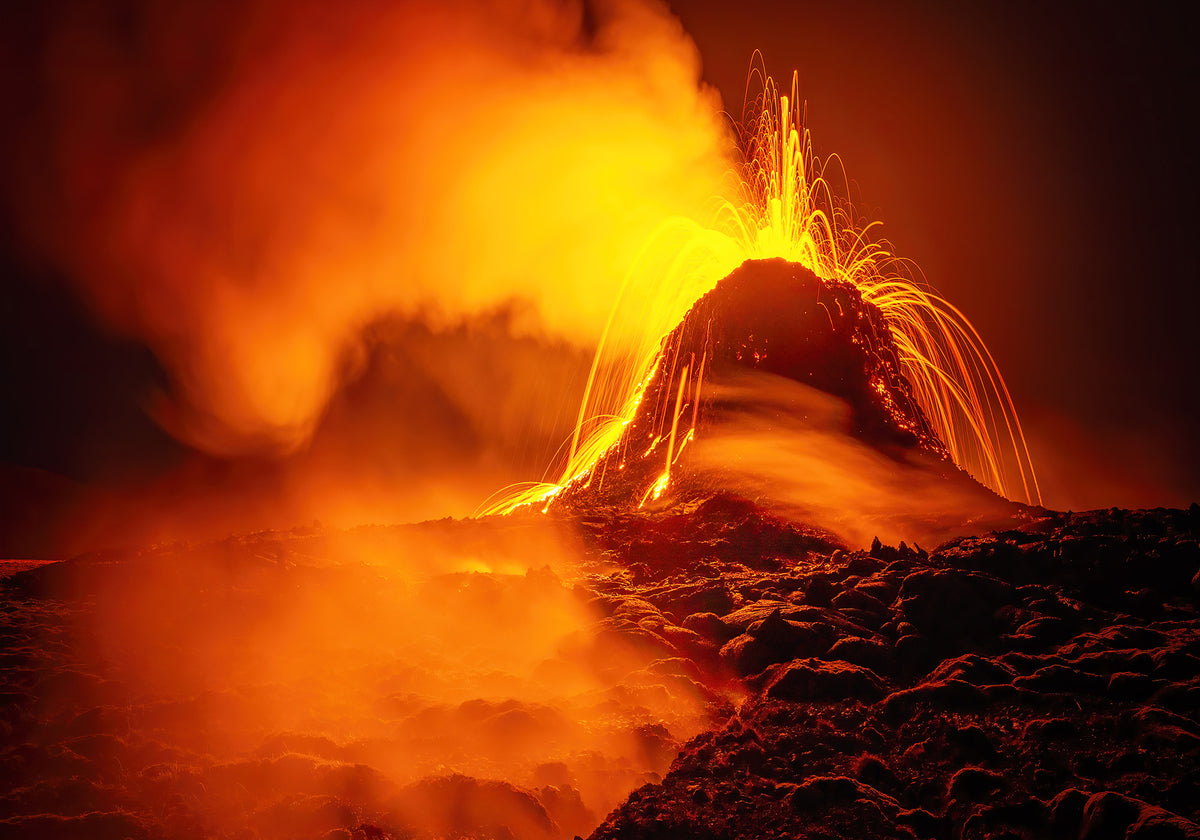
by Stefan Liebermann July 18, 2018 3 Comments
Armed with extremely bright camera equipment, we went to the photo paradise of Namibia in spring 2018. Quickly jumping into our off-road rental car, we left the international airport in Windhoek directly on a mogul slope. Already on the first meters we realized that this trip would be something very special: endless deserted expanses combined with feel-good warmth (Germany was covered under a layer of snow at that time)!

After a five-hour drive, we reached our first destination a few minutes before sunset: the town of Keetmanshoop with its famous quiver tree forest. Immediately grabbed the camera, I ran to the first tree that came along. The use of ultra-wide-angle lenses opens up new creative perspectives. In this case, a quiver tree, softly illuminated by the red evening light, leading into the center of the picture in interaction with a large number of other trees, including a setting sun in the distance. And all this, due to the lack of time, quickly "snapped" out of hand.
Night fell quickly and Namibia literally began to glow. I had never seen such an impressive starry sky with the naked eye before! Completely euphoric, because above me at least a million twinkling stars, I spent the whole night wide awake taking pictures. The result is truly spectacular night shots. Quiver trees are illuminated by the town of Keetmanshoop, which acts wonderfully as a light source. In the starry sky, our Milky Way towers imposingly. I am impressed by this variety of colors and details.

Truly overwhelmed by the experiences and completely without sleep, the journey continued to the Namib-Naukluft National Park with the Namib Desert stretching in the middle. For me, the most memorable thing there are the unique red and orange gradients in combination with the minimalist structures of the desert sand during the evening lighting mood.

Unfortunately, we were only able to enjoy the sunset for a short time, because we went directly to the absolute highlight of the entire tour: Stargazing at one of the most spectacular places on earth, the clay pan Sossusvlei (Deadvlei), enclosed with sand dunes and interspersed with dead trees. This feeling of being the only person within a radius of more than 50 kilometers in the middle of the desert, this absolute freedom is simply overwhelming! A landscape photographer's dream.
Which planet is this? It's our earth! On the night panorama, high up in the distance, the band of our Milky Way arches over a tree that has been dead for more than 500 years. The white clay floor seems to glow in the reflected starlight. To the left, beneath the arc of the Milky Way, rises the zodiacal light, sunlight reflected by dust circling in the interior of our solar system. To the right, just above one of the largest sand dunes on Earth, is the Large Magellanic Cloud.

An interactive 360° night panorama consisting of 42 individual photos could also be recorded and created. It shows in a unique way the fascination of the Namib Desert during the night. Right in the middle of it!
The last stop is the Matterhorn of Namibia. With an altitude of 1728 m, the Spitzkoppe towers over its surroundings. Bizarre rock formations created by erosion processes make the area the ideal playground for any photographer. The view from the air underlines the dimension of these seemingly endless expanses. In combination with a typical African sunset, a permanently manifested memory.

Fortunately, we also caught a cloudless, starry night. The Milky Way stretches across the abstract landscape. A photographer stands in a huge rock arch and lets the magic work its magic on him.
After a lot of sleep, wonderful memories of a fascinating trip across Namibia remain. The country not only impresses with its species-rich wildlife, which is the subject of many documentaries, but also with breathtaking, varied landscapes that have a special charm during the night. Namibia, we'll see you again!

Finally, a big thank you to Jana Maier and Riccardo Schläger, who contributed significantly to the realization of the project.
February 20, 2022
The pictures are really amazing. My husband and I are also going to Namibia next year and I am just starting to learn astrophotography. I have a Canon RP with 15-35mm lens 2.8 aperture. I hope that's enough.
How exactly can you take such a photo that the Milky Way can be seen as an arc with a beginning and an end? And I would also be very interested in how you create the 360 degree photo. Is this possible with a standard mirrorless camera?
Regards
Selina Bläss
February 20, 2022
Insanely great shots! May I ask when you were there in the spring, i.e. in which month?
The sun sets very early and the Milky Way reaches its peak deep into the night. How did you manage to photograph these amazing sunsets together with the Milky Way? I am passionate about photography myself and would like to get more into astrophotography.
Regards
Selina Bläss
September 26, 2019
THANKS TO THE CREATOR OF THIS BEAUTY, THANK YOU TO THE EXCELLENT EYE OF THE PHOTOGRAPHER and thank you for the pleasure of being able to participate as a viewer.
Comments will be approved prior to publication.

by Stefan Liebermann January 01, 2022

by Stefan Liebermann July 01, 2021

by Stefan Liebermann May 07, 2021
Sign up to receive the latest information on offers, releases, and more.....
© 2025 Stefan Liebermann.
Stefan Liebermann
Author